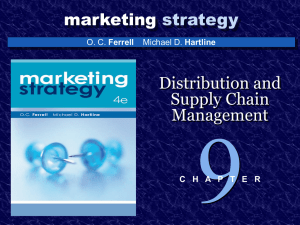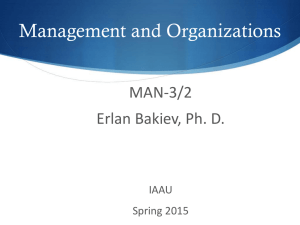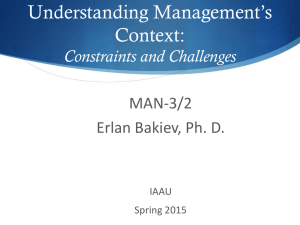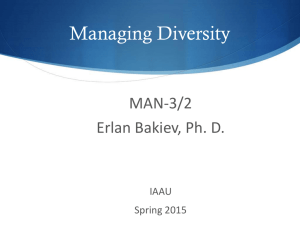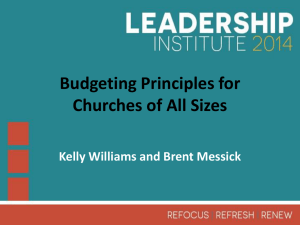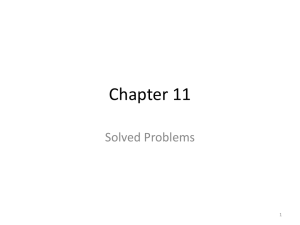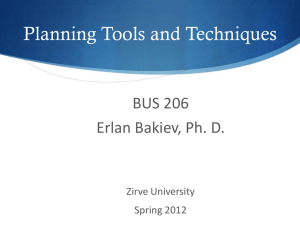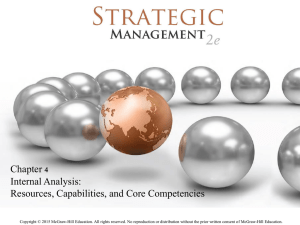Chapter 3: The Carbon Cycle
advertisement
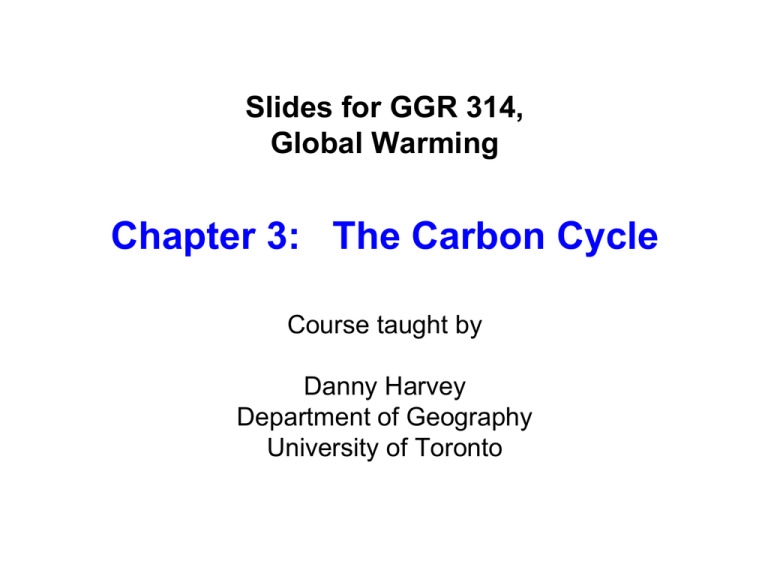
Slides for GGR 314, Global Warming Chapter 3: The Carbon Cycle Course taught by Danny Harvey Department of Geography University of Toronto Exhibit 3-1: The pre-industrial carbon cycle Atmosphere 560 120 60 M Biota 720 aR 60-M-R 100 100 Surface Water 560 Soil & Detritus 5400 R 50 40 Biota 3 (1-a)R 10 10 Net Flux = B Deep Ocean 34,000 B Exhibit 3-2: Collapsing vegetation and exposure of previously frozen C-rich soils as permafrost warms Source: http://www.globalcarbonproject.org/news/SoilOrganicPoolsinPermafrost.html Exhibit 3-3: A carbon rich soil above permafrost (left) and ice wedges in permafrost (left) Source: http://www.globalcarbonproject.org/news/SoilOrganicPoolsinPermafrost.html Exhibit 3-4: Diatoms, depicted below, have SiO2 (siliceous, made of silica) skeletons Source: Wikipedia, Open Source photo in article on plankton Exhibit 3-5: Coccoliths (left) and foraminifera (right) have calcium carbonate (calcareous) skeletons Width of image: 5.5 mm Source: Left, Wikipedia, Richard Lampitt and Jeremy Young in article on “Coccolithophore” Right, Wikipedia article on “Foraminifera”, author Psammophile Exhibit 3-6: Geographical variation in net primary productivity of the world’s oceans Source: Schlesinger (1991) Exhibit 3-7: Variation of potential pCO2 in the low-latitude ocean Source: Broecker and Peng Fraction of Injected Gas Remaining in the Atmosphere Exhibit 3-8: Impulse responses – the variation in the amount of a GHG remaining in the atmosphere after a “pulse” (sudden) emission at time t=0. 1.0 N2O 0.8 CO2 0.6 0.4 CH4 0.2 0.0 0 50 100 150 Years after Impulse Source: Harvey (2000, Global Warming: The Hard Science, Prentice Hall) 200 Exhibit 3-9: Simulated variation in the terrestrial biosphere sink using the LPJ dynamic global vegetation model driven either by observed temperature and precipitation variations (CRU Climatology) or with output from two climate models Source: Fischlin et al (2007, IPCC AR4, WGII) Exhibit 3-10: CO2 emissions and CO2 sinks for a scenario where trend of increasing emissions turns around between 2010-2020. Source: Harvey (1989, Climatic Change, Vol. 15, 343-381) Exhibit 3-11: Methane escaping from thawing yedoma (loess) soils in Siberia Exhibit 3-12: Sonar image of methane bubbles rising from the sea floor along a 2.5 km segment in 250-m deep water west of Svalbard (Arctic Ocean) Methane bubbling from lakes http://www.youtube.com/watch?v=eM5WPl69Z18&feature=related Source: Kerr (2010, Science, Vol. 329, 620-621) Video, methane from frozen lakes, ignited http://www.youtube.com/watch?v=oa3M4ou3kvw Methane bubbling from lakes http://www.youtube.com/watch?v=eM5WPl69Z18&feature=related Exhibit 3.13a: CO2 stabilization scenarios Exhibit 3-13b: Range of CO2 emissions permitted for the various stabilization scenarios

